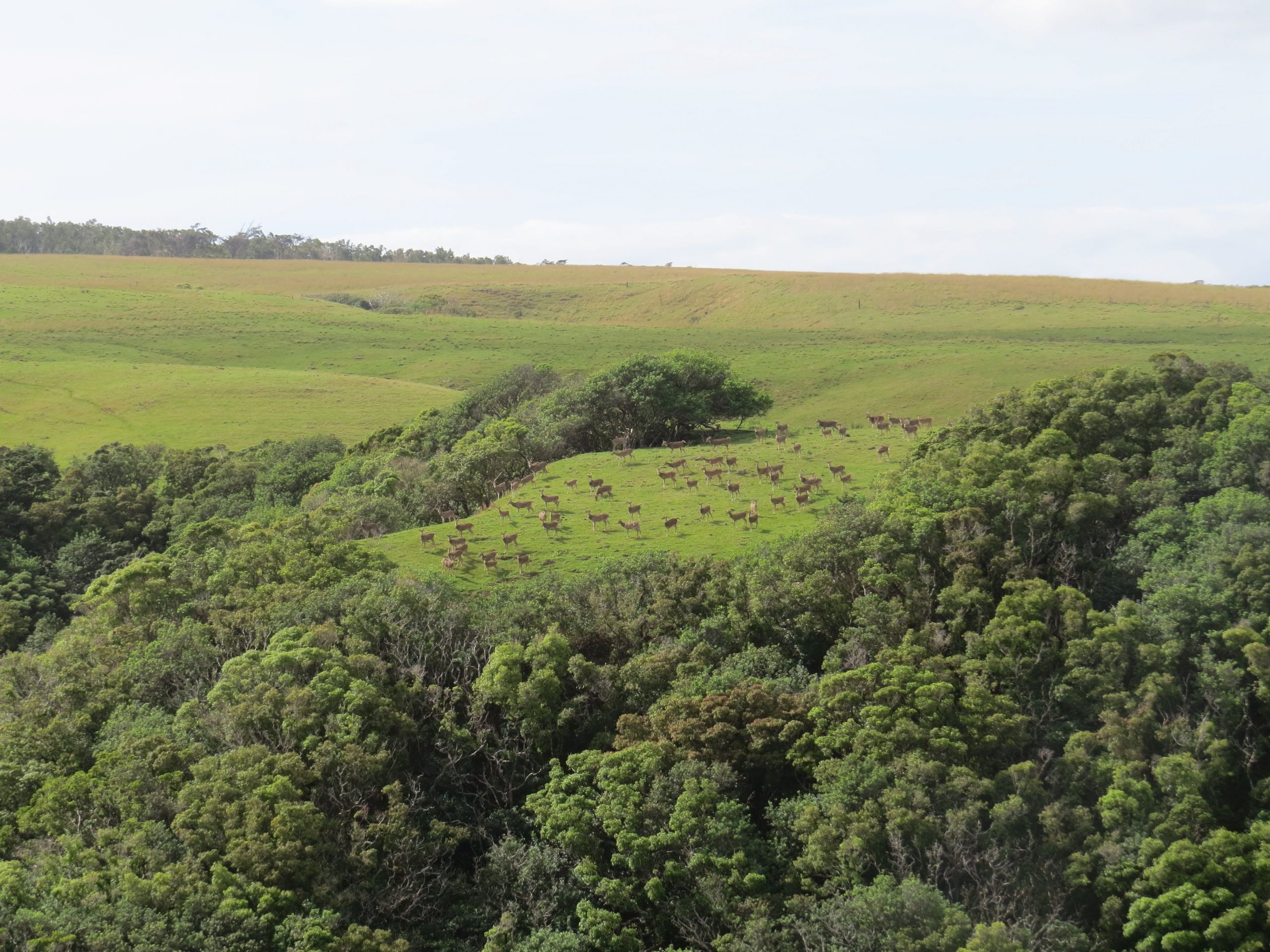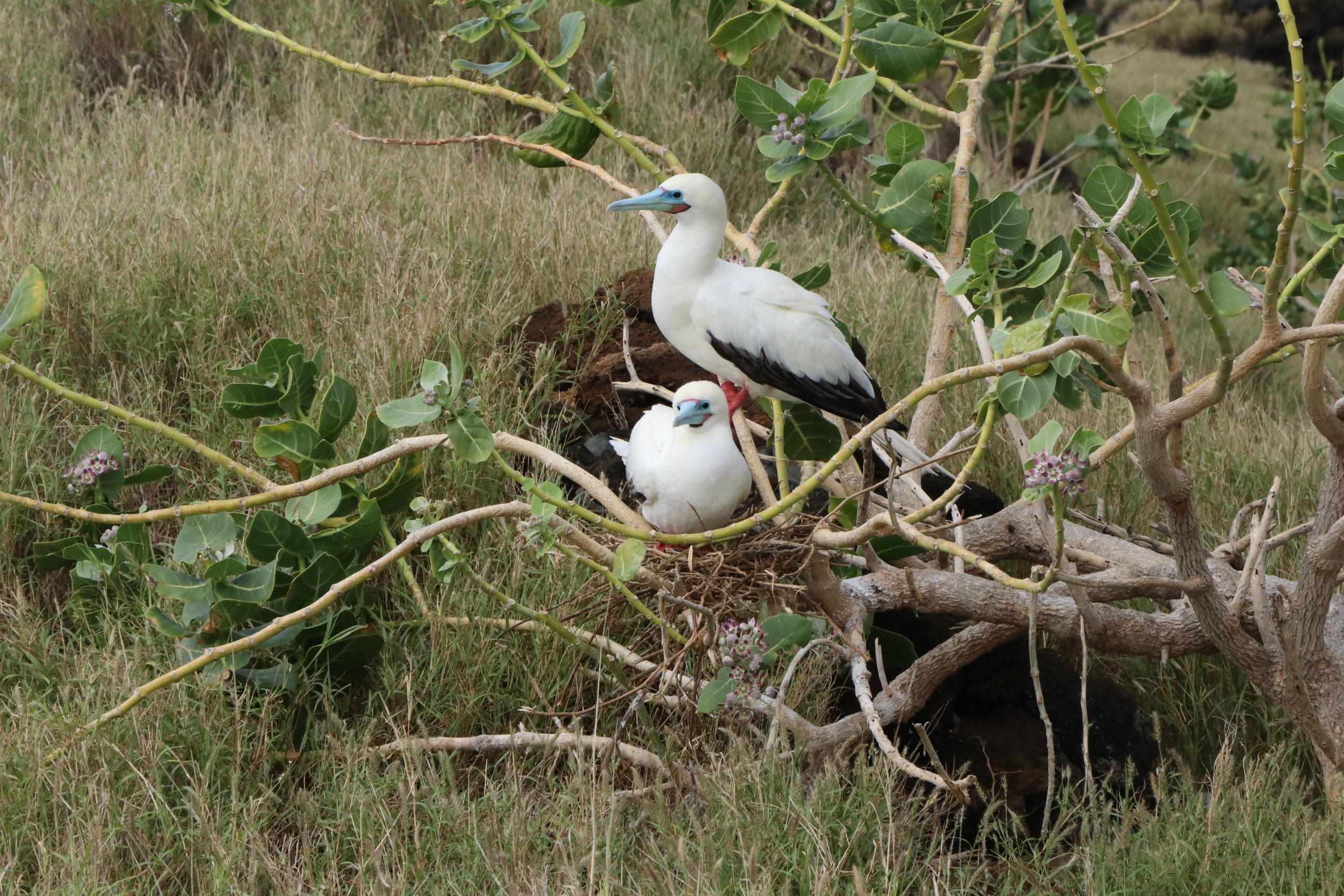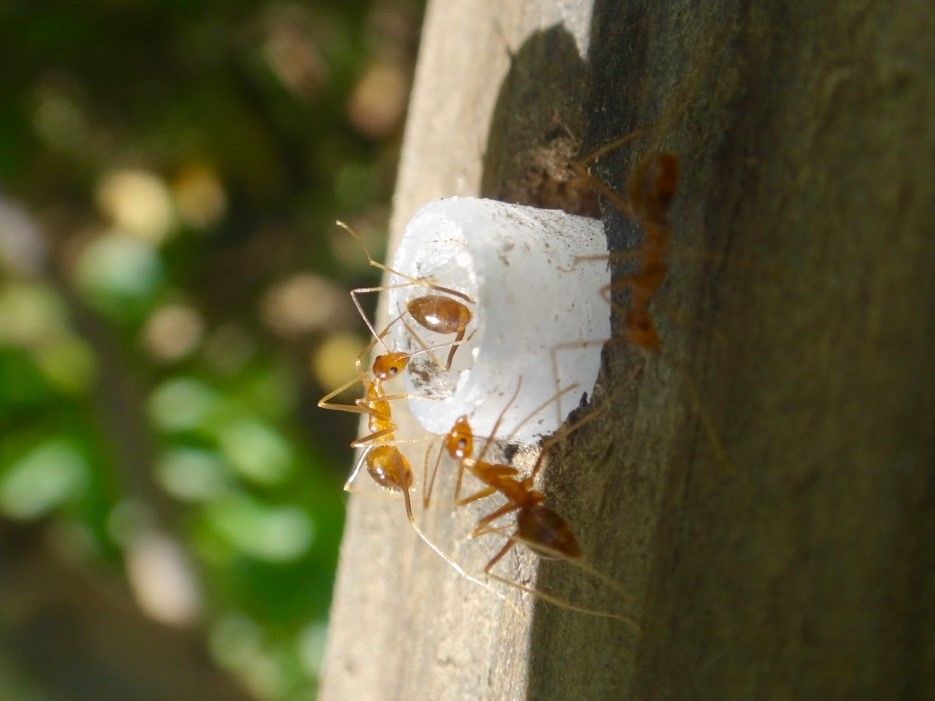(KAHULUI) – Only one of the islands, comprising Maui Nui, is free from hooved animals. The 32,000-acre Kaho‘olawe no longer experiences ungulate-caused deforestation and the loss of topsoil, after goats, sheep, and cattle were eliminated from the island.
Invasive Species
(KAPAʻA)–Hosting its 4th virtual “Forest Friday” conversation on June 4 the Kauaʻi Invasive Species Committee (KISC) and Kauaʻi Forest Bird Recovery Project (KFBRP) plan to address dwindling forest bird populations on Kaua’i. This month’s topic is: The skies are empty and the forest is quiet. Is it too late to save our native forest birds?
(LĪHUʻE) – Just in time for Earth Day 2021, Lehua Island, the tiny, but mighty island off Kaua‘i’s west shore has been declared free of damaging, introduced (invasive) rats. After many dec-ades, the island is free of invasive vertebrates, enabling Hawaii’s seabirds to safely nest on the steep rocky shores, and native plants to flourish once again.
(Mānoa Cliffs Restoration Area, O‘ahu) – State researchers, working to re-establish the population of Hawai‘i’s official state insect, the Kamehameha butterfly (pulelehua), are being deterred by predators that are feeding on caterpillars before they have a chance to develop into butterflies.
(HONOLULU) –Invasive species have devastating effects on Hawaiʻi’s agriculture, food self-sufficiency, freshwater quality and quantity, human health, and on the health of native species and ecosystems. February 1st marks the start of Hawaiʻi Invasive Species Awareness Month.
(Honolulu) – Researchers with the DLNR Division of Forestry and Wildlife (DOFAW) and the U.S. Fish and Wildlife Service’s Pacific Islands Coastal Program (USFWS) have discovered the endangered Hawaiian yellow-faced bee, (Hylaeus anthracinus) is being threatened by invasive ants. These findings are the subject of a new paper being published in the open-access journal, NeoBiota.
(HONOLULU) – The illegal burning of Christmas trees at Ahu O Laka (Kāne'ohe Bay sandbar) is not only a violation of State of Hawai‘i Administrative Rules (HAR), this year, it was exacerbated by non-compliance with COVID-19 mandates. Photos on social media sites show large numbers of people standing shoulder-to-shoulder without masks, as tree-fueled fires burn in the background.
(Kaunakakai, Moloka‘i) – Surveys and investigations by the DLNR Division of Forestry and Wildlife (DOFAW) staff suggest that recent instances of deer dying on Moloka‘i are due to severe drought conditions. DOFAW began receiving reports earlier this month of deer being found both on roadways and on private lands in West Moloka‘i.
(Honolulu) - The COVID-19 pandemic is providing the opportunity for ‘ōhi‘a lovers across Hawai‘i to participate in the annual ʻŌhiʻa Love Fest, which previously has been held as an in-person event in Hilo. Anyone, anywhere can celebrate Hawai‘i’s most abundant tree, ‘ōhi‘a lehua, during this week-long virtual event.
(Līhu‘e) - The most recent helicopter surveys conducted by the Kauaʻi Rapid ʻŌhiʻa Death Rapid Response Team resulted in detections of the virulent fungal pathogen known as Ceratocystis lukuohia in two new areas on Kauaʻi, the upper Hanalei valley and along the north side of Powerline Trail.





